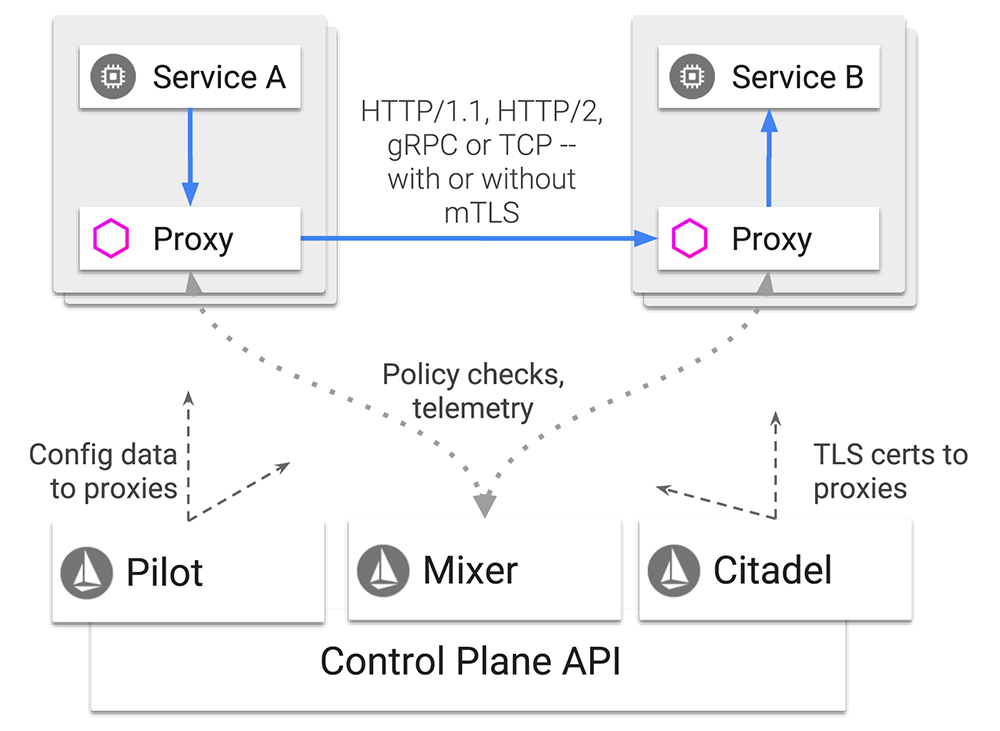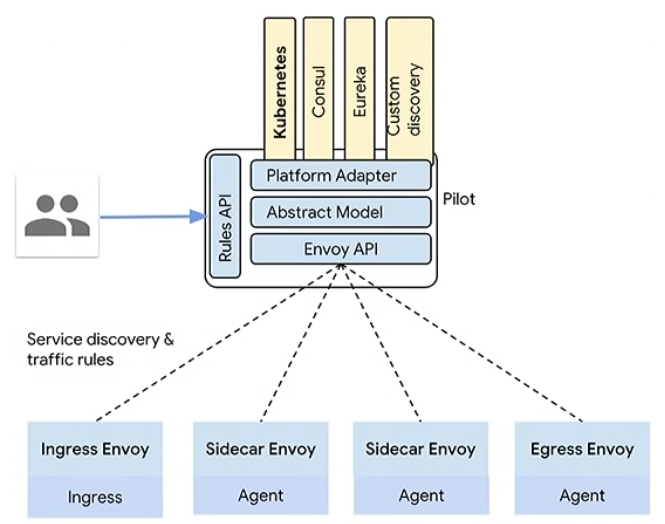Let's start with this - what problem does Istio solve?
Or... are we just using it cause it's the next cool thing? To be honest - there's a bit of both, from what I'm seeing with most of my customers.
To illustrate the problem Istio solves, lets take an example customer who already has their Kubernetes clusters. It doesn't matter on which cloud/data center k8s Masters and Workers are. SRE team is properly skilled, and operating the environment. The Developers see the great improvement as there's a clear improvement, plus an SRE team clearly understands what they need. Life is good.
Knock, Knock...
D: Oh... it's Marketing! Hello, Marketing, how can we help you?
M: Hey, Developers!!! How are you, bros? So... we have this super awesome new feature we'd like to test only in Southern Spain, and only on iPhones... and maybe just like half of the users if possible. How long do we need to do this?
D: ˆ%#$%!@ say... what??? Hey @SRE team, any chance Kubernetes can manage traffic management this granular?
SRE: Hmmm... How many people are we allowed to add to the team to operate the environment? Does potential business benefit justify contracting new SREs?
Enter - Service Mesh
And let's consider Istio, as my favourite Service Mesh at the moment...
- Traffic Management: We can do Canary Testing, where we would like redirect 10% of traffic to the New version of the app. Or, create an algorithm that redirects an application to a different version, such as - iPhone users, let me route you over ... here.
- Security Authentication and Authorization: Identity is assigned to each Pod when it's spun up, and we can create rules and policies for ACL, to say what services they can access.
- Logging: Istio also has a dashboard in Grafana.
Istio is a CONTROL PLANE (adds a pluggable Control Plane), and a Service Mesh is an actual Data Plane. Everything that Istio does is via Envoy Proxy, which is a literal Sidecar that is spun up with EACH Kubernetes Pod.
What are some elements in the Istio architecture diagram above?
Pilot
Delivering config to the Proxies (Envoy). As a User you interact with the Pilot, through CLI, Automatically, or CI/CD. Pilot is in charge of:- Service Discovery
- Intelligent routing
- Resiliency
Envoy Proxy
L7 Load Balancer, Sidecar for all the Containers. It's a literal Sidecar, and Envoy Proxy is deployed along with EACH of the Pods. It takes care of:- Dynamic Service Discovery
- Load Balancing
- TLS Termination
- Health Checks
- Staged Rollouts
Mixer
Access control, quota checking, policy enforcement. Mixer keeps checking and getting reports if all Proxies are alive and well. Single API for syndicating, so Plugins for Monitoring, API management or Prometheus would go to Mixer.Citadel
Strong service-to-service and end-user authentication with built-in identity and credential management.Istio CA
Handles the certificates, to secure the communications.Istio uses the following configuration concepts:
- Virtual Service
- Destination Rule
- Gateway
- Service Entry
This entire mechanism seems (and is) pretty complex, but it allows us so much more in the micro service architecture. For more details I recommend checking out the official documentation, it's pretty well organized and technically written.
Conclusion
Kubernetes as such adds a big operational overhead. Istio adds even more overhead, and a big complexity on top of your platform. Should you use Istio then? If you have a huge Kubernetes clusters, bunch of Cloud Native Applications designed with micro services, with hundreds... maybe thousands of containers, and you also have a business requirement that justifies adding the overhead - sure, Istio is awesome! If not... maybe look for a simpler solution to your problem.






